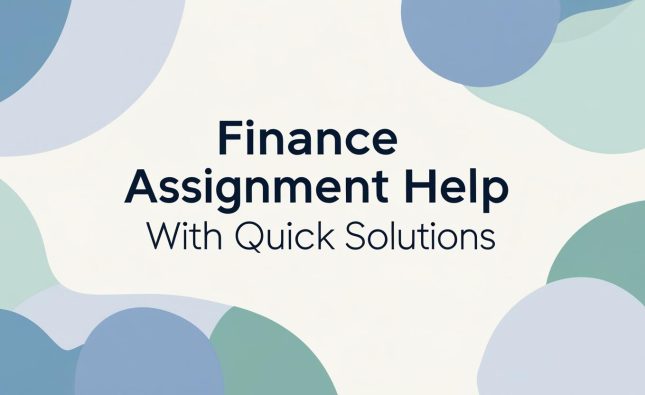
In a world marked by uncertainty, achieving financial independence has become a paramount goal for many individuals. The concept of financial independence, often synonymous with early retirement or the ability to live off passive income, has gained significant traction in recent years. One notable advocate of this philosophy is J.L. Collins, whose book “The Simple Path to Wealth” provides a comprehensive guide to attaining financial independence through straightforward principles and long-term investing strategies.
Understanding Financial Independence

Financial independence is the state of having sufficient personal wealth to live indefinitely without having to work actively for basic necessities. It grants individuals the freedom to pursue their passions, spend time with loved ones, and engage in activities that bring them joy without being constrained by financial obligations. Achieving financial independence involves a combination of saving diligently, investing wisely, and adopting a mindset focused on long-term wealth accumulation rather than short-term gratification.
Challenges and Considerations
While the principles outlined in “The Simple Path to Wealth” provide a solid foundation for financial independence, it’s essential to acknowledge the challenges and considerations along the way. Market volatility, economic downturns, and unexpected life events can test even the most robust financial plans. Additionally, individuals must navigate their unique circumstances, such as debt repayment, healthcare costs, and family obligations, which can impact their journey to financial independence. Flexibility and adaptability are key virtues, allowing individuals to adjust their strategies as needed while remaining focused on their long-term goals.
The Journey to Financial Independence: A Personal Quest
Ultimately, the journey to financial independence is deeply personal, shaped by individual values, aspirations, and priorities. It’s not merely about accumulating wealth for its own sake but rather about gaining autonomy and security to live a fulfilling life. For some, financial independence may mean retiring early to pursue passion projects or travel the world, while for others, it may entail achieving a better work-life balance or supporting charitable causes. Regardless of the path chosen, the principles espoused in “The Simple Path to Wealth” serve as a guiding light, empowering individuals to take control of their financial future and embark on a journey of self-discovery and fulfillment.
The Principles of “The Simple Path to Wealth
J.L. Collins distills the journey to financial independence into a few simple yet powerful principles:
- Spend Less Than You Earn: The cornerstone of financial independence is to live below your means. By saving a significant portion of your income, you can accumulate wealth over time.
- Invest in Low-Cost Index Funds: Collins advocates for investing in low-cost, broad-market index funds such as those tracking the S&P 500. These funds provide diversification and historically have offered competitive returns compared to actively managed funds.
- Embrace the Power of Compound Interest: Compound interest is the snowball effect of reinvesting earnings, leading to exponential growth over time. By starting early and staying invested, individuals can harness this power to build substantial wealth.
- Ignore Market Noise and Stay the Course: Market fluctuations are inevitable, but attempting to time the market or react to short-term volatility often leads to suboptimal outcomes. Collins encourages investors to stay the course, remain disciplined, and focus on the long-term horizon.
Analysis Table: “The Simple Path to Wealth” Principles
| Principle | Description | Importance |
|---|---|---|
| Spend Less Than You Earn | Living below one’s means by controlling expenses and saving diligently. | Fundamental principle for wealth accumulation and financial security. |
| Invest in Low-Cost Index Funds | Advocates for passive investing in diversified, low-cost index funds. | Provides broad market exposure with minimal fees, maximizing long-term returns. |
| Embrace the Power of Compound Interest | Highlights the exponential growth potential of reinvesting earnings over time. | Capitalizes on the compounding effect to accelerate wealth accumulation. |
| Ignore Market Noise and Stay the Course | Advises against reacting to short-term market fluctuations and staying committed to long-term goals. | Maintains focus on the big picture and prevents emotional decision-making during market volatility. |
Comparative Analysis of Financial Independence Strategies
| Strategy | Description | Pros | Cons |
|---|---|---|---|
| Traditional Retirement Planning | Relies on a combination of employer-sponsored retirement accounts, such as 401(k) plans, and individual retirement accounts (IRAs). | Tax advantages and employer matches may boost savings. | Limited control over investments and potential for high fees in some retirement plans. |
| Real Estate Investment | Involves purchasing properties to generate rental income and/or capital appreciation. | Potential for passive income and portfolio diversification. | Requires substantial initial capital, ongoing maintenance, and market volatility. |
| Entrepreneurship | Involves starting and growing one’s own business ventures. | Unlimited income potential and autonomy over work. | High risk, uncertain returns, and significant time and effort required for success. |
| Frugal Living and Index Fund Investing | Advocates for minimizing expenses and investing in low-cost index funds. | Simplicity and ease of implementation. | May require patience and discipline for long-term wealth accumulation. |
Conclusion
Achieving financial independence is within reach for those willing to adopt a disciplined approach to saving and investing. “The Simple Path to Wealth” offers a roadmap grounded in simplicity and backed by timeless principles. By prioritizing financial literacy, embracing long-term thinking, and staying committed to a plan, individuals can
on their journey toward financial freedom and ultimately live life on their own terms.










